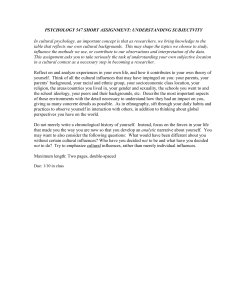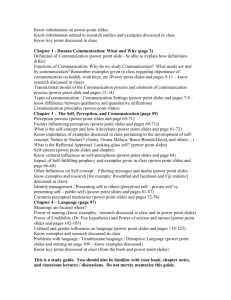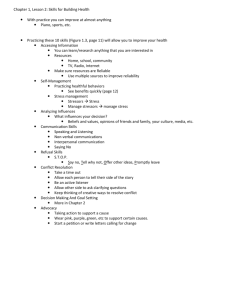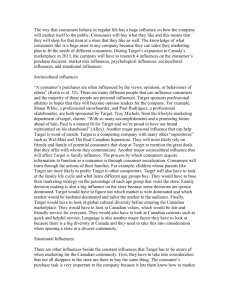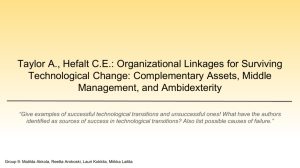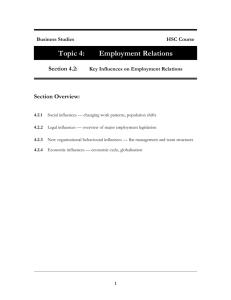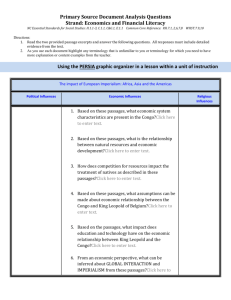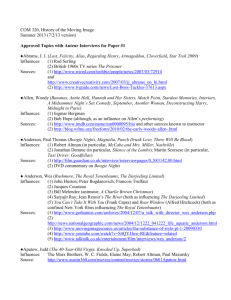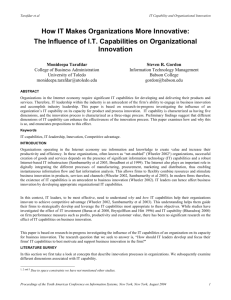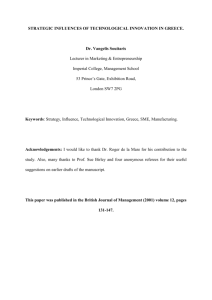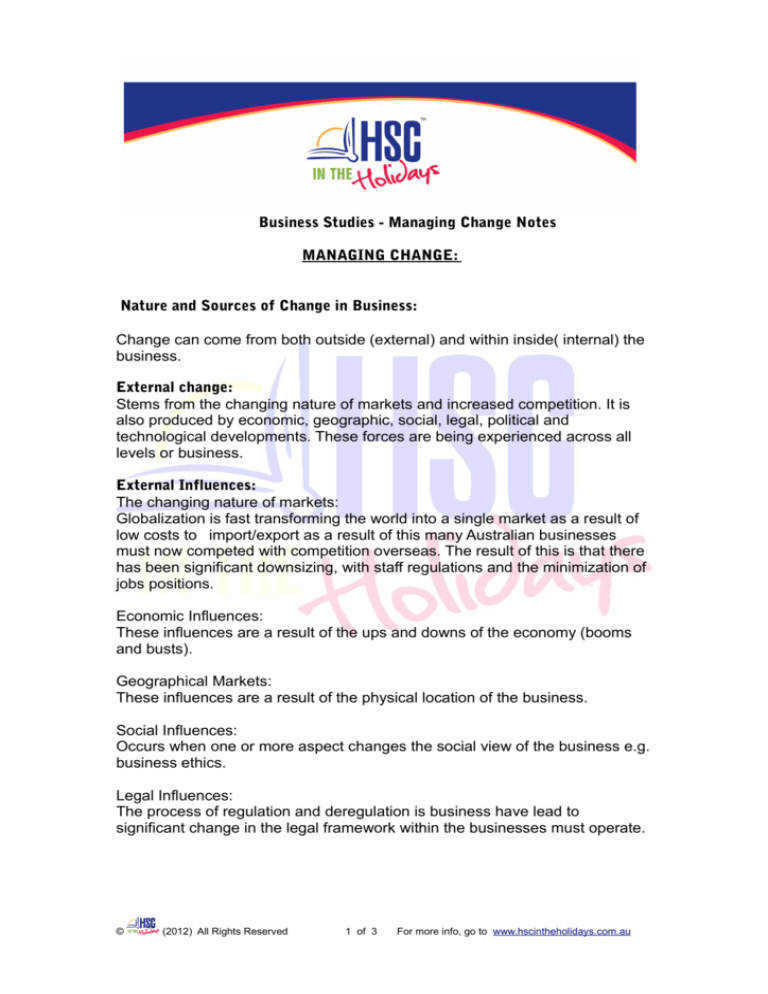
Business Studies - Managing Change Notes
MANAGING CHANGE:
Nature and Sources of Change in Business:
Change can come from both outside (external) and within inside( internal) the
business.
External change:
Stems from the changing nature of markets and increased competition. It is
also produced by economic, geographic, social, legal, political and
technological developments. These forces are being experienced across all
levels or business.
External Influences:
The changing nature of markets:
Globalization is fast transforming the world into a single market as a result of
low costs to import/export as a result of this many Australian businesses
must now competed with competition overseas. The result of this is that there
has been significant downsizing, with staff regulations and the minimization of
jobs positions.
Economic Influences:
These influences are a result of the ups and downs of the economy (booms
and busts).
Geographical Markets:
These influences are a result of the physical location of the business.
Social Influences:
Occurs when one or more aspect changes the social view of the business e.g.
business ethics.
Legal Influences:
The process of regulation and deregulation is business have lead to
significant change in the legal framework within the businesses must operate.
©
(2012) All Rights Reserved
1 of 3
For more info, go to www.hscintheholidays.com.au
Political Influences:
All organizations are required to interact with the government at one time or
another because they are subject to government regulation. Government
establish ever changing rules that businesses must comply with.
Technological Developments:
Often force businesses to change because of increased efficiency and making
the previous manufacturing method obsolete.
Internal Influences:
Effects of accelerating technological change:
New technology has decreased the amount of time that it takes for information
to be transferred around. This creates a need for this change as other
businesses will have an advantage over those who don’t have this technology.
E- Commerce:
Is the use of electric communications to business.
New Systems and Procedures:
The main chances to existing businesses are:
• New business tools that assist in accessing and analyzing information form a
variety of sources
• The integration of business into the global market
• The cultivation of an outward-looking, export- orientated business culture
• Improved methods of processing vast amounts of information
• The shift away from trading goods to trading in information
• businesses being able to organize production to ‘ Internet time’ schedules in
which computerized stock controls reorder products and arrange delivery
automatically.
New Business Cultures:
Business cultures are an important variable to business productivity,they are
reflected by the management type of the business.
Structural Responses To Change:
The business environment is dynamic, this means constant change and the
rate of change is increasing.
Structural responses to change refer to the changes in how the business is
organized, that is the organizational structure e.g.. pyramid to flat structure.
Network Structures:
A business may be set up to administer a series of other biz that manufacture,
transport, market, retail etc, the product. The business doesn't own any of the
networked business
Advantage of the network model:
• can adapt to change very rapidly e.g. if demand increases, add on an extra
manufacturer.
Outsourcing:
Is when a business contracts some of the businesses operations to other
businesses for example cleaning.
©
(2012) All Rights Reserved
2 of 3
For more info, go to www.hscintheholidays.com.au
Flat Structures:
This is when businesses change their organizational structure in order to
manage change.
Strategic Structures:
occurs when two businesses join together and pool recourses and funds.
Reasons for Resistance to Change:
Financial Costs:
Purchasing new equipment: is a costly part of change and can often be a
reason for resistance.
Redundancy Payments: Is when employees skills are redundant and the are
dismissed the business will often make these payments.
Retraining the Workforce: The costs of this training.
Reorganizing the plant layout: Plant layout is the physical arrangement of
people and machinery within the business.
Inertia of Managers and Owners:
Refers to an unenthusiastic response from management to proposed
changes.
Cultural Incompatibility in Mergers/Takeovers:
When two companies merge there can be a culture clash this can be caused
by a number of reasons including a difference in management theories.
Staffing Considerations:
De Skilling: Is when employees skills are no longer required, staff resist
change because they don’t want their skills to become redundant.
Acquiring New Skills: Employees can often be resilient to acquiring new skills
this can often be because they do not want to continue education.
Loss of career prospects or promotion.
©
(2012) All Rights Reserved
3 of 3
For more info, go to www.hscintheholidays.com.au

